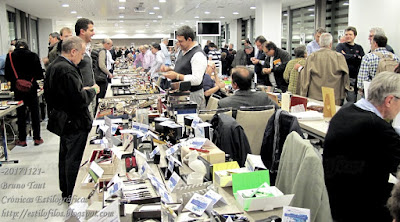The Wagner “end-of-the-year” bazaar is a mixture of an end of the year party and a small market where to sell all those pens –and accessories you might no longer want. Or at least that was at some time. Nowadays, it has become a small pen show for local traders perfectly comparable in size with the “Pen Trading” (such is the name) event celebrated in Tokyo in Spring, usually by the end of April or beginning of May (::1::, ::2::).
So, this past December 30th, pen aficionados in Tokyo gathered at the end-of-the-year bazaar organized by the Wagner group. Between 150 and 200 visitors, and about 15 traders conformed this event where the commercial activity dominated over any other aspect. Fair enough… save for the exhaustion of the formula: too few traders with small variety and selection of pens for a very active pen community. The paradox is that other events in Tokyo organized by Maruzen (World of Fountain Pens) and by Mitsukoshi (Fountain Pens of the World Festival; ::1::, ::2::, ::3::), both focused on new pens—attract a lot more people and generate a higher economic activity.
Japan seems faithful to its tradition of isolation. The Galápagos syndrome is alive and well in a number of areas in this island nation. It is not easy to pinpoint a single reason to explain such attitude, but Economics might provide some arguments—are there real incentives to open the market to Barbaric influences?
Now, how long can this isolation last?
Romillo Nervión – Sailor Blue Iron
Bruno Taut
Nakano, January 8th 2018
labels: evento, Tokyo, mercado, Japón
Bruno Taut
Nakano, January 8th 2018
labels: evento, Tokyo, mercado, Japón
























































